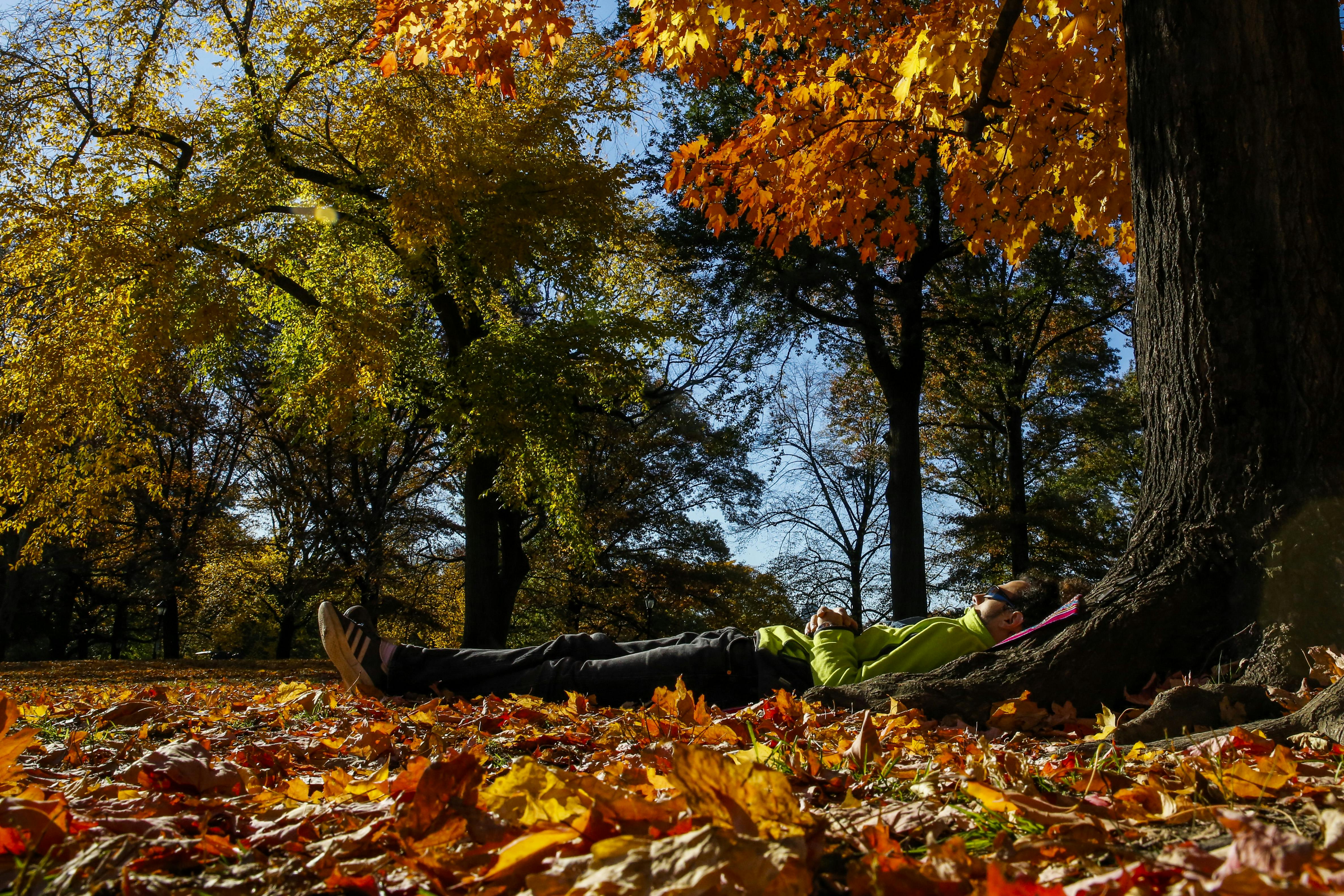|
 Eduardo Munoz Alvarez/Getty | |||
| Here in D.C., Thanksgiving weekend coincided with a burst of warm weather, which residents eagerly seized on to gather safely outside before the grim pandemic winter experts are predicting. One thing I noticed, while doing similarly, was how many leaves still clung to the trees—how many, in fact, hadn’t even started to turn color until a few weeks ago. You’d think this banal observation would be pretty easy to link to climate change. But in fact, autumn leaves turn out to be a startling example of just how much we still don’t know about how the world works—and how global warming will change it. Last year, around this time, Sara Peach at Yale Climate Connections tried to unpack the ways in which the fall season manages to evade scientific consensus. Fall foliage, at least in the eastern United States, is indeed arriving two weeks later than it used to in the 1990s. But the total effect on foliage is hard to assess, Peach explained, in part because there isn’t a single standard—some studies measure when the leaves first start to turn, others when half have dropped, and others when they’ve finished dropping.
Last Friday, as many of us were enjoying some fleeting distanced socializing, the journal Science published a troubling new study. Global warming, researchers based in Germany and Switzerland wrote, might actually bring European autumn leaf drop forward by a half- to a full week, “rather than lengthening [it] by 1 to 3 weeks as the current phenological models have predicted.” More carbon dioxide and heat in the spring and summer will increase productivity but lead to earlier leaf “senescence.” And, in turn, autumn coming sooner will limit temperate forests’ carbon-absorption capacity. Studies like these are one of the reasons I’m uncomfortable with breezy technocratic optimism about global warming. (You know, the kind that boils down to faith that a big and special vacuum will suck carbon dioxide out of the air for us, as we leisurely switch to solar over the course of the twenty-second century.) We’ll figure something out; we always do! is a weirdly confident belief, even when we know the exact contours of the problem we’re dealing with. But with climate change, we don’t even know that. It’s a giant, wildly complex planetary experiment on the only planet we (and millions of other species) inhabit. Then, too, this sunny confidence in the powers of market ingenuity tends to produce weak policies that allow oil and gas companies to keep blasting fumes into the air. TNR’s Kate Aronoff wrote about that problem this week, since President-elect Joe Biden intends to appoint a lot of Obama and Wall Street alums who favor an “all of the above” energy strategy (i.e., increasing renewables subsidies while also boosting natural gas) to key posts. “If there was some case to be made for that strategy a decade ago,” Kate writes, “it’s gone now.” The climate emergency is clearer now than it was then, and the genteel values of fiscal discipline, good public-private sector relations, and the market-based climate policies they beget aren’t enough to save us. The rest of Kate’s thoughts on that are well worth your time. —Heather Souvaine Horn, deputy editor | |||
| Advertising  | |||
 | |||
 | |||
| Solar power facilities are starting to plant pollinator-friendly native grasses and wildflowers between their panels, which research suggests might have beneficial effects for nearby crop yields, groundwater, and even the efficiency of the panels themselves, by cooling the immediate surrounding area. Inside Climate News has an intriguing story about the potential payoff of this approach (as well as a caveat about greenwashing risks). | |||
 | |||
| Experts worry that the right-wing flight from Facebook and Twitter (which are starting to crack down on misinformation) to Parler (which has no such scruples) is going to fuel climate denial. | |||
 | |||
| How Rethinking Affordable Homes Connects With the Climate Fight | |||
| “Typically, a warming climate and scarce affordable housing are seen as discrete issues with separate causes, consequences and political coalitions,” writes Geoff Dembicki. Focusing on Vancouver, British Columbia, he points out how tightly these issues are in fact entwined. Many neighborhood investments in sustainability (bike lanes, for example) are made in a way that drives gentrification, while the design and location of low-income neighborhoods leaves residents dependent on cars. Meanwhile, perfectly carbon-neutral homes aren’t carbon neutral if they go to the ultrarich, who buy them as a second or third abode and then fly between them. Increasingly, it looks like policies to make cities more sustainable won’t work if they don’t tackle affordability issues:
| |||
| Geoff Dembicki | The Tyee | |||
| Advertising  | |||
 | |||
| Support Independent, Issue-Driven Journalism | |||
| | |||
| Copyright © 2020, The New Republic, All rights reserved. | |||
